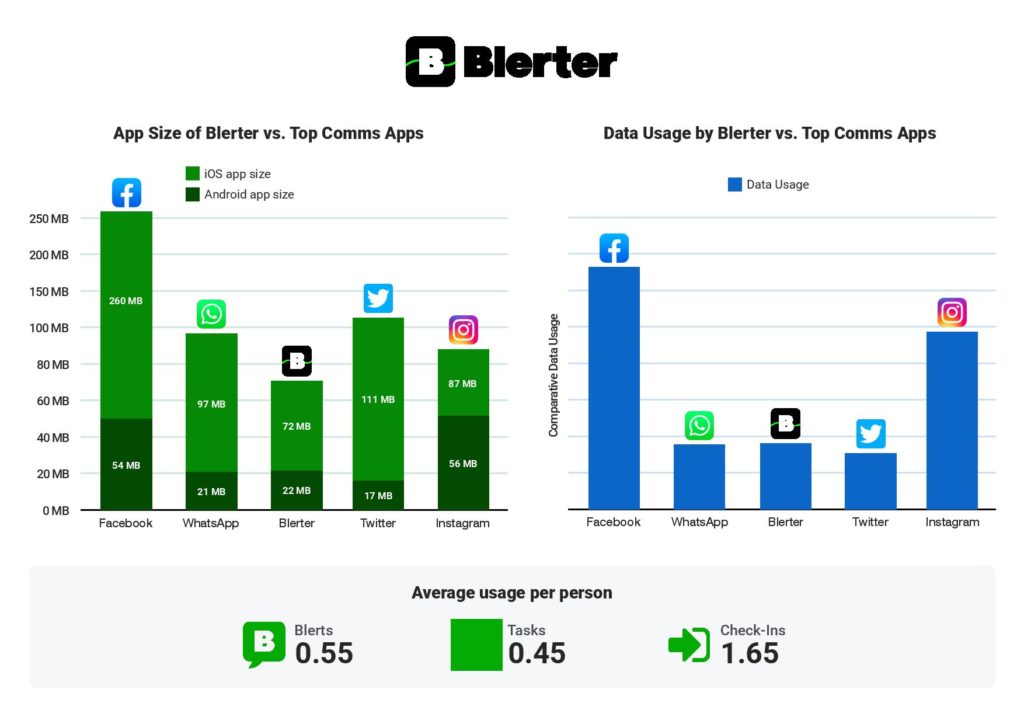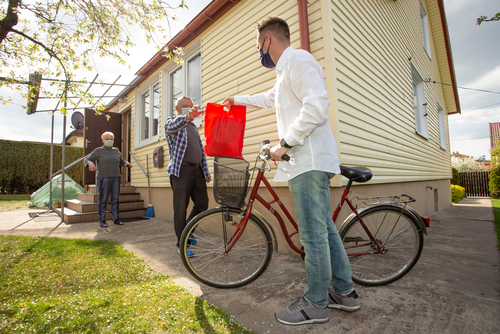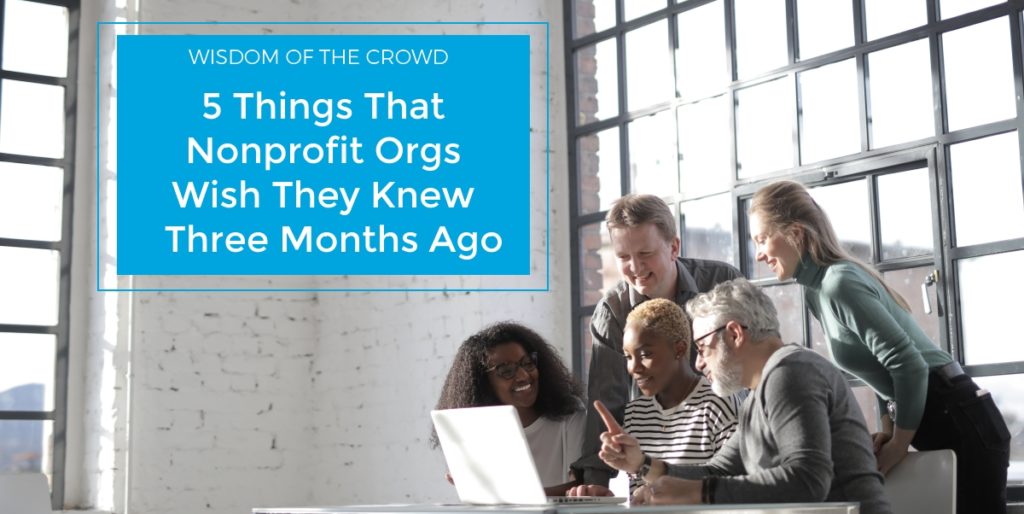Thank you to DonorPerfect for sharing this article with our community! Read the original article here.
If you had a time machine and could go back to before coronavirus (COVID-19) impacted the world, how would you prepare? What would you do differently? We surveyed over 700 nonprofits to find out what advice they’d give themselves and others about fundraising in the new normal. Here’s what they told us:
1. Set Up Better Data Collection Standards and Regularly Audit Them
Many nonprofit organizations have made the transition to working remotely due to COVID-19 health concerns. They depend on the quality of the data collected in their donor management system. Duplicate addresses, missing data, and outdated contact preferences can hinder your ability to connect with your donors. Like you, many of your constituents are also working from home, using their personal cell phones and email addresses. Are you reaching these donors effectively, or are you frustrated because you’re unable to contact a percentage of your donor base? The bottom line: if you can’t reach your donors, you can’t solicit them. If you haven’t done so already, update your procedures to collect contact methods and donor information that will facilitate virtual fundraising. The good news is that DonorPerfect’s flexibility allows you to easily customize your system to collect and organize your data to fit your organization’s needs best.
SURVEY SAYS:
Here’s how NPOs told us they are making the most of the data in their DonorPerfect system to fundraise during COVID-19:
“Our strategy is to build a strong relationship with individual donors through our DP database, learn about their giving patterns, and establish appeals related to those patterns.”
“Make a plan to segment your constituent base and decide who from your organization will make personal contact with your constituents.”
ACTION ITEM:
What data collection improvements can your nonprofit make to improve virtual fundraising?
2. Take a Balanced Approach With Your Revenue Streams and Include Digital Fundraising
Many nonprofits rely heavily on in-person fundraising. The organizations we surveyed said they’re now focusing on a more balanced approach that includes a mix of in-person, virtual and digital fundraising components.
Virtual Fundraising and In-Person Events Can Co-Exist
Future events, for example, may include in-person opportunities, like a 5K run, but also provide avenues for anyone who wants to participate by offering a virtual component, such as a virtual 5K where participants run on their own between specific dates. The key is to find ways to engage with off-site participants so that they feel like they are part of the event. This might include sending t-shirts and other event goodies to participants as well as “virtual-only” type Zoom kickoffs or online challenges.
PRO TIP:
Thinking about hosting a virtual event? See how this NPO moved their fundraising event online.
Work with Existing Partners In New Ways
Don’t be afraid to reach out to event sponsors, grant funders and major donors to see if they’d be willing to work with you on how unspent funds are allocated, such as event table sponsorships. Many of the nonprofits we surveyed did that with great success. They were surprised that these partners still wanted to help and were okay with re-allocating those funds to other program needs, such as moving event table fees to sponsor online auctions.
Build A Multichannel Donor Strategy
A balanced fundraising strategy also includes a plan for multichannel donor engagement. Your supporters often engage with your organization using more than one channel. They give online through your website and emails. They like and share your social media posts. They attend your fundraising events and sign up for volunteer opportunities. Pair your website, emails, and social media campaigns with a variety of ways for donors to support your cause that is quick and easy, not only for your donors to engage but also for you to manage.
SURVEY SAYS:
Here’s how NPOs told us that they are adapting their fundraising efforts to be more balanced during and after COVID-19:
“Get digital! Although this has been a big hit to our traditional operations, it has granted us the opportunity to strengthen our communications work! Look for ways to grow in the meantime!”
“We’re establishing a strong social media following and developing a reliable digital marketing plan that ties donors to online giving platforms like our website.”
“Changing your narrative. If fundraising via events, instead find creative ways to continue to raise funds virtually.”
“We have been successful with pleas explaining our loss of revenue due to canceled fundraising and adoption events. We solicited sponsors for our biggest event and were able to raise almost as much as we netted in the past.”
“We looked at all of our current grant and major donors, and, if there were funds unspent from each of their gifts, we asked if we could redirect it to our COVID-19 response. Everyone has agreed.”
ACTION ITEM:
How balanced are your revenue streams? Could your organization have a better mix of in-person, virtual, and digital fundraising components?
3. Don’t Underestimate the Power of a Good Technical Support Team
Now, more than ever, your donor management software is a lifeline to maintain good donor relationships. If it’s not working, or you are struggling with how to do something within the software, you want an experienced support team that’s there for you. DonorPerfect has the best support in the industry. Not only are they incredibly knowledgeable, but they were working remotely immediately as soon as the crisis hit. The transition was seamless. As a result, the nonprofits we serve were running remotely and ready to meet the challenges they faced.
SURVEY SAYS:
The NPO’s we surveyed told us that reliable IT support was crucial to getting their nonprofits up and running as the cornonavirus pandemic began.
“Have up-to-date IT infrastructure to enable secure remote work for employees. As long as they can continue doing their jobs, it gives the organization the best chance to get their message out and, hopefully, continue to raise funds.”
“I have never had a better tech support experience in the CRM industry. Every chat, call, or email is responded to almost immediately, with courtesy, professionalism, and best of all, knowledgeable solutions.”
ACTION ITEM:
Transitioning to remote work and virtual fundraising can be a challenge. Get the support you need from this list of resources to help nonprofits during the coronavirus (COVID-19) pandemic.
4. Have a Solid Donor Stewardship Plan in Place
How do you engage with supporters so that they become more invested in your organization’s work? If you don’t have a plan in place for thanking, communicating, and interacting with donors regularly, it will be more challenging to get them to respond during a crisis. Many organizations we surveyed saw the value of having a solid donor stewardship plan in place and are concentrating their efforts to pay more attention to this in the future. Here are two areas in your donor stewardship plan to focus on in the next few months:
Communications
Plan specific touch points to communicate with donors regularly, and not just once a year when you send tax letters. This will engage your donors and involve them in your organization’s work. Focus on creating personalized (segmented) communications that update donors on the impact of the campaign they’ve supported.
Engagement
Brainstorm ways to get donors actively involved with your organization through events, surveys, and volunteer opportunities.
SURVEY SAYS:
Here’s what NPOs told us about their renewed focus on a strong donor stewardship plan:
“Be flexible on everything except the value of stewardship; it’s important to provide stewardship more than ever.”
“Much comes down to the relationship groundwork laid in the years before events like this. Even so, continue to meet the needs of your donors first. Reach out to them, check on them regularly. Let them know what you are doing to face the financial difficulties, and thank them for their efforts in getting you this far. Be honest about your needs. Be transparent.”
“Focus first on non-fundraising messages – we are here and doing ok, how are you? what can we do to help you? Then build upon those good messages before asking for money”
“Find creative ways to thank your donors. We had yard signs made and delivered them to donors. We also called and thanked every donor.”
ACTION ITEM:
Do you have a plan to thank, communicate, and interact with donors on a regular basis? What touch points will you put in place to engage donors? Follow these tips to connect with donors and gain the confidence to fundraise in today’s environment.
5. Investing in Yourself Pays Big Dividends Down The Road
When you’re busy working towards fulfilling your nonprofit’s mission, it can be easy to forgo the time needed to invest in “auxiliary” tasks that build your skills and fuel your mission. Many of the nonprofits we surveyed regretted not taking time to pursue training, practice using tech tools, or sharpen other skills that help them be more productive. These were skills that would have made the transition after COVID-19 began much smoother. Moving forward, they plan to refocus those efforts and commit to the importance of investing in yourself.
PRO TIP:
Take advantage of the free training that DonorPerfect offers. Our Foundational Series is a collection of 15 free, live webinars that takes you through basic and intermediate functions in DonorPerfect.
SURVEY SAYS:
Here’s how the organizations that we surveyed are re-prioritizing their time in ways they didn’t before:
“Use this time to build a strong foundation and to do research. To prep for anything you might have in the future (events, or transitions).”
“Turn your worries into fueling your creativity. Now is the time to try new things, and if it doesn’t work, at least you tried. Listen to ALL members of your team and overall organization. Again, get creative and just GO! I think donors will appreciate at least the effort, even if they can’t give.”
“Appeal to your supporters. Remember, you are TRYING to work from home in a crisis. Cut yourself some slack. Now’s the time to be creative and remember your mission.”
“You have to re-create your fundraising plan and adjust it to our new reality and environment. Participate in webinars for education and support from other fundraisers.”
“Learn what your niche is and how you can continue to provide services and programs within the restraints. don’t wait for the crisis to be over.”
“Never waste a good crisis; figure out what you can do that will help in the future. How can you get an ROI in the digital literacy skills we are all developing?”
ACTION ITEM:
What new skills have you learned through your experiences in the last three months? What new skills do you want to cultivate?
BONUS: The Brighter Side of the COVID-19 Crisis
One surprising thing that came out of the COVID-19 crisis for many nonprofits was how much their donor community loves them and wants to support their efforts. Constituents facing substantial economic challenges are coming forward to rally behind the missions of the organizations they love and admire. Not only are they providing financial support, but they are stepping up with creative and resourceful ways to volunteer and collect in-kind donations for program areas. People want to know how to make a difference right now. Make it clear how they can help and demonstrate the critical impact it has.
SURVEY SAYS:
NPOs repeatedly shared with us how their constituents were generously supporting their missions above and beyond what they anticipated:
“Remain calm. Some people will think fundraising for anything other than pandemic relief is crass. They are wrong, and your mission-aligned donors will understand.”
“People will still give! They are sitting at home wondering how they can help from afar, and donating is still an option! Use your social media and email campaigns wisely. Everyone is glued to a screen right now, so give them the opportunity to use it for good and donate.”
“Donors want to give; they just need to know WHAT for and HOW. Keep your communications open with your community.”
“Continue to ask for donor support. They are engaged and looking for ways to help. They want to hear from you to know your needs and how they can help meet them. Be thoughtful in your messaging, but be transparent and honest.”
“Don’t beat yourself up over whether or not to ask – let the donor decide. However, be authentic about what your need is. Don’t overstate it, or you’ll lose credibility. All your targets will be off – that’s okay. We’ll all feel the impact next year too. It will take time to get back to where you were – take time to celebrate the little wins along the way.”
ACTION ITEM:
Should you move forward with your planned fundraisers or change course? If you’re feeling stuck, do this ONE thing to keep funds flowing into your nonprofit today.
The Last Word
Of all the survey responses we received, this sentiment was probably the most important:
“It’s tough! We are all in this together. It’s ok to be stressed!”
Thank you to all the nonprofit organizations that responded to our survey and took the time to provide us feedback and encouragement. We are in awe of all that you do for the communities you serve and are honored to partner with you every day, especially now during this difficult time. It is truly inspiring to watch the creative and inventive ways with which you’ve approached this crisis. When we’re on the other side of COVID-19, we have no doubt that this industry will be stronger and better than ever. So go out there and keep doing what you do the best. You’ve got this!
Read More









